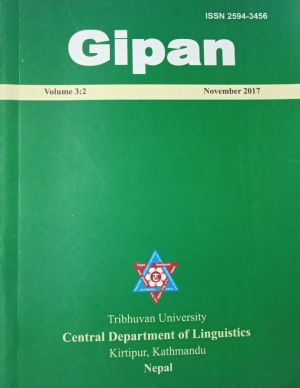Nepali Verbs: Some Properties
DOI:
https://doi.org/10.3126/gipan.v3i2.48914Keywords:
Morphology, causativization, passivization, negativization, syllabicityAbstract
Nepali verb stems end with i, a, o and ʌ vowels, and voiced and voiceless consonants. From transitivity perspective, they are intransitive and transitive/ditransitive. The verbs are monosyllabic and polysyllabic from syllabicity point of view. Another feature that Nepali verbs have is sound [a] whose presence and absence has direct impact on causative stem formation. The causative stem formation is regular with some phonological restrictions; however, the passive stem formation is very productive. Negativization occurs from both prefixation and suffixation processes. On the basis of features and morphological processes, four types of stems, namely, base stem, passive stem, causative stem and causative passive stem are found.
Downloads
Downloads
Published
How to Cite
Issue
Section
License
This license enables reusers to distribute, remix, adapt, and build upon the material in any medium or format for noncommercial purposes only, and only so long as attribution is given to the creator.

